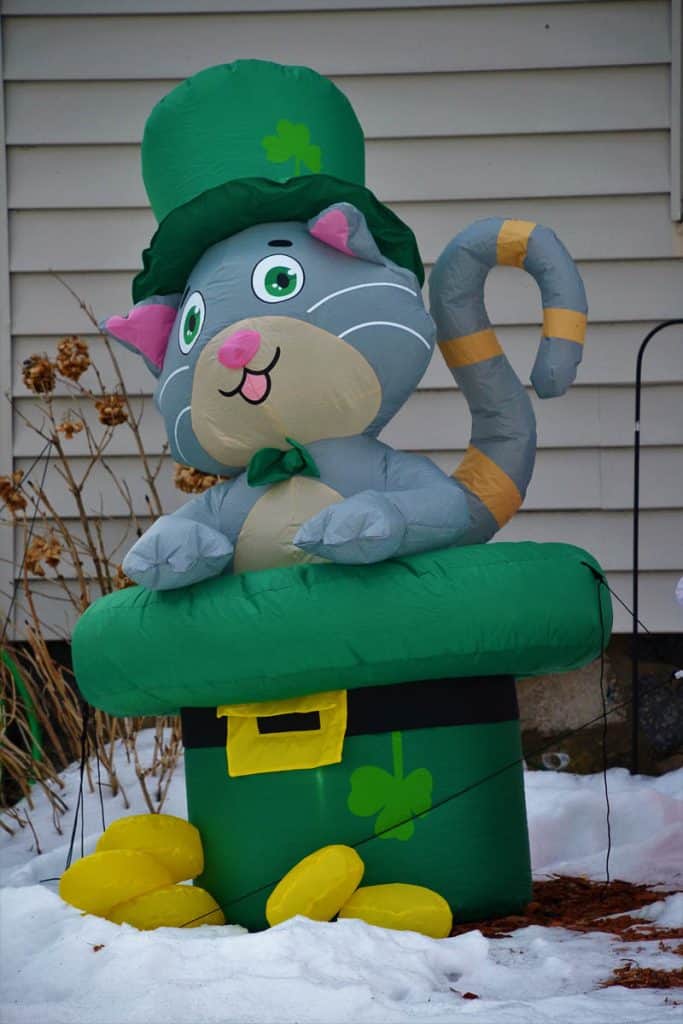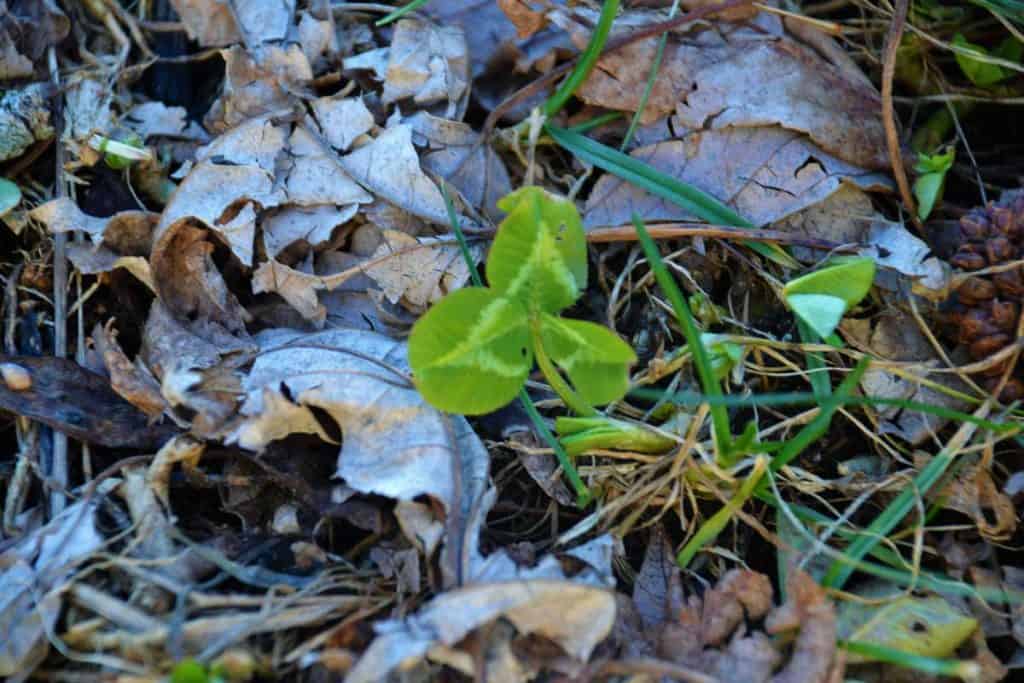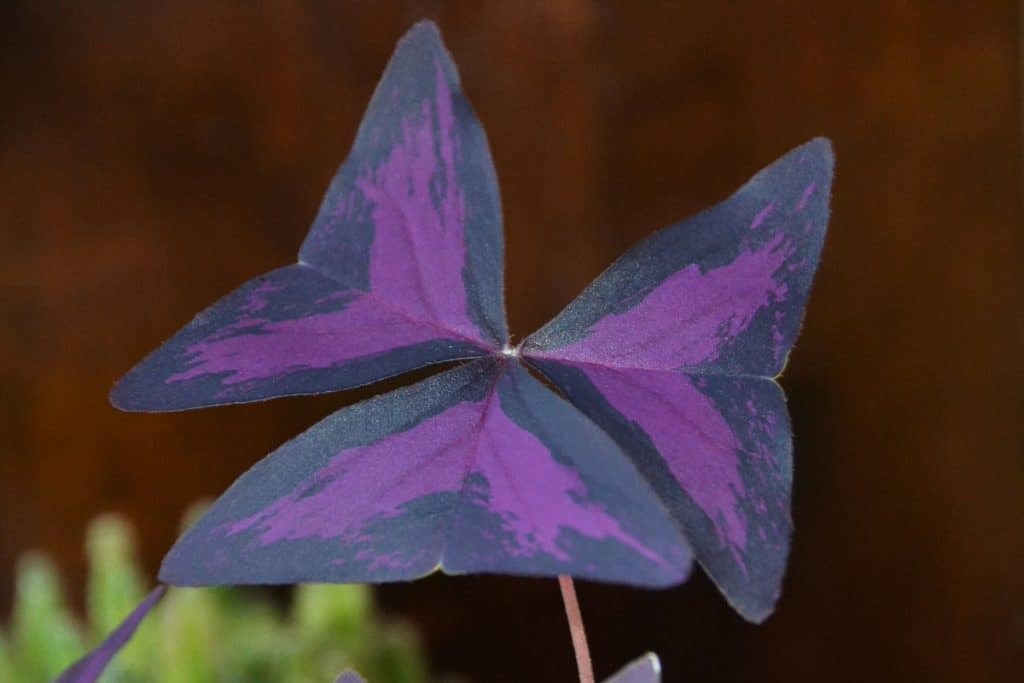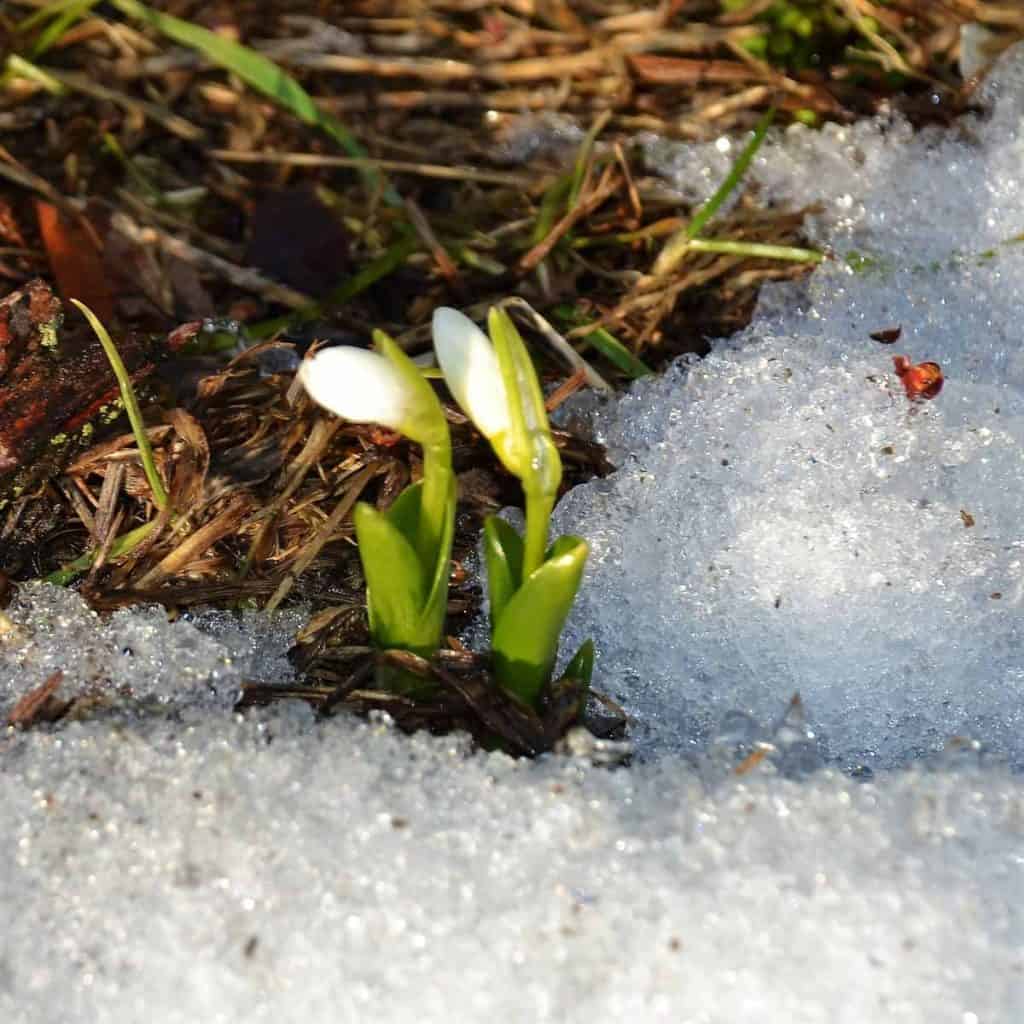Here’s what’s blooming in town this week to make your walks more enjoyable
Outdoors it may seem we are not much closer to spring than we were a few weeks ago, but there are many signs that it is on its way. At the edge of the melting snow, my snowdrops have started to open, and quite a few other plants are noticeably brighter green in recent days. The clover in my lawn is already showing some green leaflets on the sunniest side of the house; the spear-like leaves of iris, and certainly many of the daffodil leaves, are already several inches tall and full of promise.
If that’s not sufficient green, St. Patrick’s Day decorations are popping up to celebrate next Thursday’s popular holiday. I should mention that there are two saints’ days that we will be celebrating on Thursday, and one of Tonia Chadwick’s decorations manages to pay tribute to both at once. St. Gertrude’s Day also falls on March 17, and in Tonia’s front yard is an inflated figure of a green-eyed gray cat wearing a green top hat and bow tie, sitting in a larger green hat adorned with a shamrock!
Last year at this time I wrote about the continuing debate over which is the true shamrock: clover (Trifolium) or wood sorrel (Oxalis). The story goes that the fourth-century Irish Saint Patrick used the three leaflets of shamrock to explain the trinity – father, son and Holy Ghost. There are over 500 species of plants in the oxalis genus, many of them from South America, and about 300 kinds of clover, so figuring out the “true shamrock” cannot really be done in a few hundred words! Certainly both of these plants, but also quite a few others, have the necessary three leaflets. In our climate we seldom see much of either outdoors in March, although now that a few inches of ground have thawed there are a few clovers beginning to show.
Some three-leaved plants, including a few pea family members closely related to clovers, are commonly known as trefoil. While the word literally comes from a Latin word for three-leaved, trefoil can be understood to be a literal three-leaved plant, a three-lobed architectural decoration like a window or molding, or a set of three almost anything, and since March is also traditionally Girl Scout Cookie Month, we may think first of a certain Girl Scout cookie! All of these other meanings derived originally from a three-leaved plant.
Purple shamrock (Oxalis triangularis) from South America is one of the most popular houseplants sold for St. Patrick’s Day. It has compound leaves with three leaflets, but far from being green, the leaves are dark purple with slightly lighter purple markings, and the leaf stalks are also purple. The flowers are white to pale pink, with five petals, but the leaves are probably the most ornamental part of the plant. The one I bought in March 2021 is still thriving in my front window. Another tropical variety, Oxalis spiralis ‘Plum Crazy,’ has mostly purple foliage, but liberally splashed with pink, and the leaflets are much smaller and more rounded than the triangular shapes of the more readily available types of purple shamrock. Most other oxalis species have green foliage, including the somewhat common lawn weed yellow wood sorrel (Oxalis stricta).
While the three leaves are probably the most recognizable symbol of St. Patrick’s Day, four-leaved shamrocks are also popular decorations. The tradition of it being a sign of good luck stems from the rarity of four-leaf clovers, and, for that matter, of four-leaved oxalis plants. Occasional mutations are usually the cause of a four-leaved clover. We have found a few in our clover-spangled lawn, though by far the majority of leaves have the usual three leaflets. While trefoils are a very popular feature of medieval church architecture and styles derived from them, quatrefoils are also popular. As you might guess, the word comes from Latin – meaning four leaves or, more accurately, four leaflets. As for oxalis, four leaf oxalis (Oxalis tetraphylla) is one of the few in this genus that has four rather than three leaflets, and it is mostly green with just a little purple at the base of each leaflet.
Indoors or out, there can be little doubt that we are on the verge of spring. It may be another month before the predominant color of the landscape is really green, but from now on there will be more and more every day, and it is fun to notice the little details.
Editor’s Note: Laura Eisener is a landscape design consultant who helps homeowners with landscape design, plant selection and placement of trees and shrubs, as well as perennials. She is a member of the Saugus Garden Club and offered to write a series of articles about “what’s blooming in town” shortly after the outbreak of the COVID-19 pandemic. She was inspired after seeing so many people taking up walking






